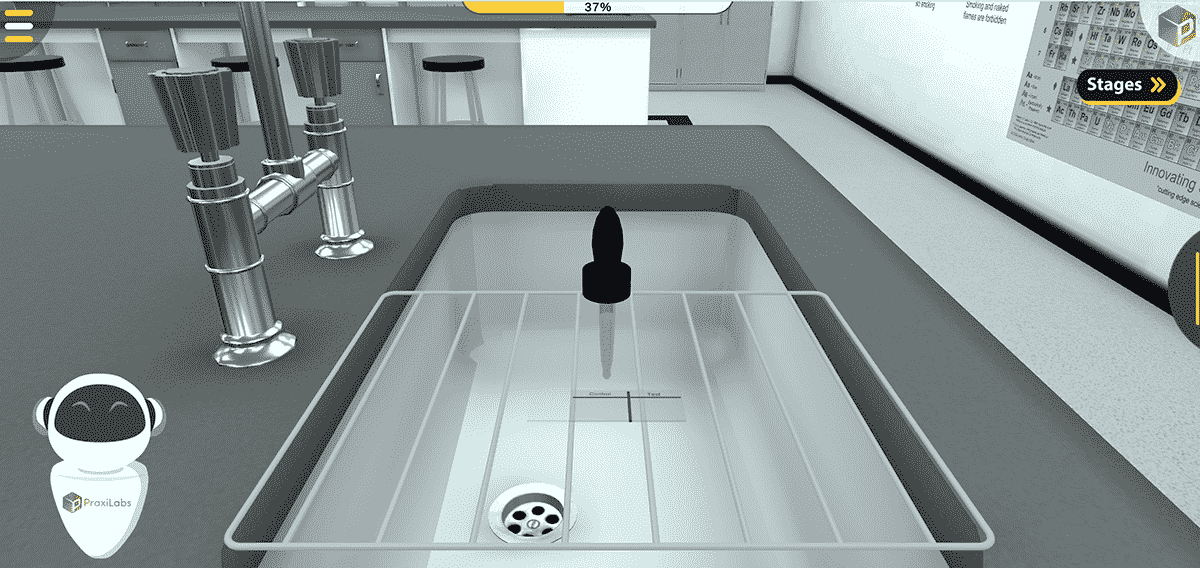Catalase Test
Biology | Molecular Biology | Biochemistry | Genetics | Microbiology






2.5M+
Active Users Worldwide
80%
Improved Learning Retention
60%
Reduction in Laboratory Costs
Catalase production and activity can be detected by adding the substrate H2O2 to an appropriately incubated (18- to 24-hour) culture through the test for catalase activity.
Organisms that produce the enzyme break down the hydrogen peroxide, and the resulting O2 production produces bubbles in the reagent drop, indicating a positive test.
Organisms lacking the cytochrome system also lack the catalase enzyme and are unable to break down hydrogen peroxide, into O2 and water and are catalase-negative.
Catalase activity is very useful in differentiating between groups of bacteria.
For example, the morphologically similar Enterococcus (catalase-negative) and Staphylococcus (catalase-positive) can be differentiated using the catalase test microbiology procedure.
Biochemical Reaction
To understand the biochemical process of hydrogen peroxide detoxification by aerobic bacteria through the production of the enzyme catalase.
The catalase test facilitates the detection of the enzyme catalase in bacteria.
It is essential for differentiating catalase-positive Micrococcaceae from catalase-negative Streptococcaceae.
While it is primarily useful in differentiating between genera, it is also valuable in speciation of certain gram positives such as Aerococcus urinae (positive) from Aerococcus viridians (negative) and gram-negative organisms such as Campylobacter fetus, Campylobacter jejuni, and Campylobacter coli (all positive) from other Campylobacter species.
Some have reported its value in the presumptive differentiation among certain Enterobacteriaceae.
The catalase test is also valuable in differentiating aerobic and obligate anaerobic bacteria, as anaerobes are generally known to lack the enzyme.
In this context, the catalase test is valuable in differentiating aerotolerant strains of Clostridium, which are catalase-negative, from Bacillus, which are catalase positive.
The catalase enzyme serves to neutralize the bactericidal effects of hydrogen peroxide (13).
Catalase expedites the breakdown of hydrogen peroxide (H2O2) into water and oxygen (2H2O2 + Catalase → 2H2O + O2).
This reaction is evident by the rapid formation of bubbles.
The streak plate method is a rapid qualitative isolation method.
It is essentially a dilution technique that involves spreading a loopful of culture over the surface of an agar plate.
The resulting diminution of the population size ensures that, following inoculation, individual cells will be sufficiently far apart on the surface of the agar medium to effect a separation of the different species present.
The streaking process will dilute out the sample that was placed in the initial region of the agar surface.
The catalase production test utilizes the catalase test reagent to detect catalase enzyme activity in bacterial cultures.




